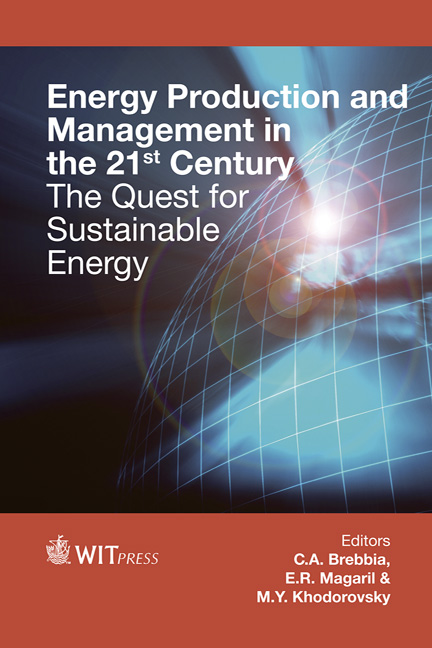Modeling Synthetic Aperture Radar Signature Of Agbabu Oil Sand For Petroleum Exploration
Price
Free (open access)
Transaction
Volume
190
Pages
13
Page Range
1283 - 1295
Published
2014
Size
2,053 kb
Paper DOI
10.2495/EQ141192
Copyright
WIT Press
Author(s)
M. Ezeoke, K. Tong & S. Shi
Abstract
Accurate characterisation of oil sand terrain using airborne or satellite synthetic aperture radar (SAR) requires prior determination of the radar signature of the terrain. Here we investigate the SAR signature of Agbabu oil sands. Firstly, the chemical characteristics of two strains of Agbabu oil sand samples are determined using Fourier Transform Infrared (FTIR) spectroscopy in the nearinfrared (NIR) and mid-infrared (MIR) regions (2.5–25μm). Spectroscopic results of both hard oil sand (HOS) and viscous oil sand (VOS) are positive when compared to common soil and oil sands from Canada. Thereafter, the electrical properties of Agbabu oil sands are experimentally determined using a coaxial probe technique for frequency varying from 1–8.5 GHz. The results provide new information on the complex electrical permittivity *(ω) and loss tangent, tan δ which exhibit an adequate Kramers–Krönig correlation between real and imaginary permittivity for both VOS and HOS. Finally, the results from the experiments are used to create computer simulation models to determine the SAR radar signature of Agbabu oil sands which is then compared to other materials such as iron and steel at L-, C- and X-band frequencies. The model parameters include look angle θl = 20° to 90°, measured dielectric constant and surface roughness ks. Keywords: Agbabu oil sand, computer simulation, dielectric permittivity, oil sand, petroleum exploration, synthetic aperture radar, SAR radar signature.
Keywords
Agbabu oil sand, computer simulation, dielectric permittivity, oil sand, petroleum exploration, synthetic aperture radar, SAR radar signature.





